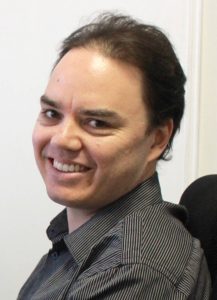Sample text for test post
Dinosaur Symposium Abstracts
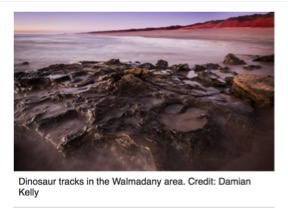 Symposium: Dinosaurs and Evolution of Life.
Symposium: Dinosaurs and Evolution of Life.
UTAS, Hobart, Tasmania
Over the weekend of 23-24th March 2019, participants at the symposium heard keynote talks by distinguished scientists in their field.
Click below to download all the lecture abstracts from the recent Dinosaur Symposium
DINOSAUR SYMPOSIUM ABSTRACTS
.
The conference was organized by The Royal Society of Tasmania as part of our 175thAnniversary celebrations, with support from the Tasmanian Division of the Geological Society of Australia and the University of Tasmania. It was run in parallel with an exhibition at the Tasmanian Museum and Art Gallery called “Dinosaur rEvolution; Secrets of Survival” created by Gondwana Studios of Launceston, Tasmania.
⋅
..
Themes of the Symposium
Recent research on dinosaurs
Evolution of dinosaurs and birds
Proterozoic evolution of life
Phanerozoic evolution of life
Mass extinction events
Subscription reminder! Please pay your 2017 subscription if you have not done so already. Thank you.
 Your contribution keeps this Society advancing knowledge. Providing the opportunity for scholars in many fields to publish their work in a yearly peer-reviewed journal (offered at a discounted price as part of the subscription fee), enables the Society to develop wonderful books like The Library at the End of the World and Charles Darwin in Hobart Town from The Royal Society Collection circa 1843, hold symposia like this year’s Winter Series coming up in July and monthly lectures, to name some of what we do. Here’s how to apply or renew membership. We strongly urge you to become apart of this long-lived, vibrant community of amazing and knowledgeable people. Come along to the next lectures in Hobart (free) and Launceston (small fee for non-members) and check it out. We welcome feedback.
Your contribution keeps this Society advancing knowledge. Providing the opportunity for scholars in many fields to publish their work in a yearly peer-reviewed journal (offered at a discounted price as part of the subscription fee), enables the Society to develop wonderful books like The Library at the End of the World and Charles Darwin in Hobart Town from The Royal Society Collection circa 1843, hold symposia like this year’s Winter Series coming up in July and monthly lectures, to name some of what we do. Here’s how to apply or renew membership. We strongly urge you to become apart of this long-lived, vibrant community of amazing and knowledgeable people. Come along to the next lectures in Hobart (free) and Launceston (small fee for non-members) and check it out. We welcome feedback.
936 ABC Hobart Kathyrn Medlock interview
Tuesday October 4, 8 – 9.30 pm TMAG Central Gallery Royal Society Postgrad Evening
Sam Cook – School of Biological Sciences
The Master Hormone: Auxin
Sam is originally from Melbourne but has been at the University of Tasmania for 8 years. He loves Tasmania for its proximity to magnificent forests, spectacular beaches and phenomenal mountains. Sam studies the phytohormone auxin and how it is made in plants and uses molecular, physiological, biochemical and genetic tools to provide a multi-faceted approach to explore auxin biosynthesis in pea and across the green lineage involved in regulating plant growth. Sam would ultimately like to work with GMOs or Forestry in the future, perhaps at the same time.
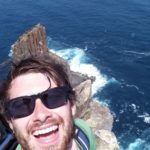
Sam Cook
Kirstin Proft– School of Biological Sciences
Bettongs on the brink: a Tasmanian ghost story
Kirstin’s PhD aims to help with the conservation of eastern bettongs, these unique marsupials are extinct everywhere except Tasmania. She is studying the genetics of bettongs in the Tasmanian Midlands, an area where lots of bushland has been cleared for agriculture and trying to understand what effects land clearing is having on the movement of animals across the landscape, hence on the genetic relationships between populations. Kirstin’s work is part of a larger effort to direct habitat restoration and replanting in the Tasmanian Midlands by researching how different animals use the landscape and what types of habitat are important for them.
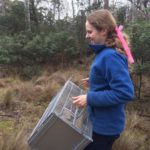
Kristin Proft. IMAGE: Kay Weltz
Daniel Hoyle– School of Medicine
Impact of Sedative Reduction
Effective methods to reduce sedative use in aged care facilities have been developed however review of the resident-related and economic outcomes are lacking in previous studies. Daniel’s research fills this gap by investigating the effect that sedative reduction has on residents involved in the national expansion of a project aimed to improve the review and use of sedatives in aged care, called the Reducing the Use of Sedatives Project.
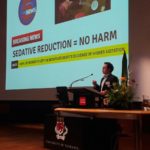
Daniel Hoyle
Bruce Duncan– Faculty of Education
Grasping the slippery slope: The construction of understanding in mathematics classrooms.
Bruce is looking at the relationship between teaching approach and learning outcomes in mathematics. Research claims that students need to be engaged cognitively in their learning in order to develop useful understanding of mathematical concepts. His project is testing this claim in a secondary maths classroom by implementing a problem-based approach to teaching. When learners have to think about how a problem can be solved, they are expected to develop more flexible understandings and remember the concepts better than with a more teacher centred teaching approach.
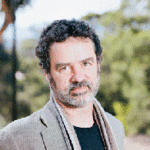
Bruce Duncan
Dr Amy Edwards– School of Biological Sciences
Captive Breeding for Conservation
Australia has the world’s highest rate of mammal extinctions, and breeding in captivity has become commonplace for many of our endangered and threatened species. However, unfortunately some breeding programs are experiencing sex ratio biases in their offspring. Amy’s work looks at both the mother’s and the father’s side of the story to investigate why these biases may be occurring and whether we can safely correct them to ensure the success of our breeding programs.
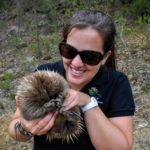
Amy Edwards
Phillipa McCormack– Faculty of Law
Biodiversity conservation law and climate change: can we do better?’
There are a range of adaptation strategies that have been identified by ecologists and evolutionary biologists as critical for biodiversity conservation under climate change. Phillipa’s work considers the extent to which these strategies are already represented in Australian conservation law and policy. It then investigates the ways in which we might improve strategy implementation through law reform, to ensure that plants, animals, ecosystems and landscapes have the greatest opportunity to adapt and persist as the climate changes.
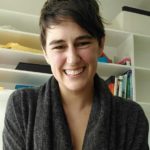
Phillipa McCormack
Hoang Phan– Menzies Institute for Medical Research
Sex Differences in Long-term Mortality and Disability of Stroke in the INternational STroke oUtComes sTudy (INSTRUCT).
Women appear to have worse outcomes of stroke including mortality, disability and poorer quality of life but it remains unclear why it is the case. Hoang’s aim is to examine the cause of the differences between men and women using data from high quality and generalizable studies around the world including 16,000 strokes.
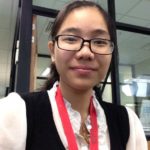
Hoang Phan
Pearse Buchanan– Institute for Marine and Antarctic Studies
Ocean deoxygenation and nitrous oxide, otherwise known as laughing gas
Unlike the atmosphere, the ocean has experienced variations in the concentration of oxygen that are present in the surface during past instances of climate change. Strong variations were felt in the lower latitudes, specifically in the oxygen depleted zones of the eastern tropical Pacific and the Northern Indian Ocean. Today, these same deoxygenated zones are important because they produce nitrous oxide, one of three major greenhouse gases in the atmosphere directly influencing the climate. Variations in the oxygen content of the ocean affect the degree to which these zones produce or consume nitrous oxide and variations in oxygen play an important role in determining the trajectory of climate change. Pearse’s research seeks to improve our mechanistic understanding of the cyclic interplay between climate, oxygen, nitrous oxide and climate.
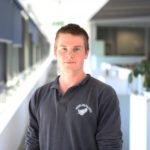
Pearse Buchanan
Lavenia Ratnarajah – Institute for Marine and Antarctic Studies
Effects of natural iron fertilisation by Antarctic krill and baleen whales on the Southern Ocean carbon cycle
Phytoplankton plays a really important role in removing carbon dioxide from the atmosphere. However, the growth of phytoplankton in large areas of the Southern Ocean is limited by the availability of a key micronutrient- iron. Lavy’s PhD investigates the role of the biology, in particular Antarctic krill and baleen whales as a source of recycled iron in the Southern Ocean, and the impacts of historical whaling practices on the global carbon cycle.
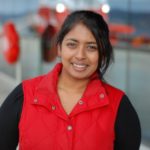
Lavenia Ratnarajah
Lynda Kidd – Faculty of Education
Teacher education graduates: What are they doing now?
Initial teacher education courses are designed to prepare graduates for teaching in the K-12 school system. Research, however, shows that many of these graduates do not end up in the classroom. Lynda’s study explored the different occupations that these graduates obtained and which skills developed during their teacher education studies were being utilised in their chosen careers
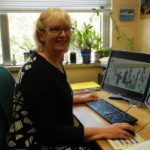
Lynda Kidd
Macarena Pavez – Faculty of Health
The interaction of calcium signaling and the cytoskeleton in navigating growth cones
In order to develop effective therapies to treat neurological disorders such as autism and schizophrenia, we need to understand how our brain is wired during normal development. Neurons send out long processes, called axons, to connect with their correct target in a process known as axon guidance. The axon is guided to that target by a structure at the axon tip called a growth cone, which responds to guidance cues in the environment. How the growth cone navigates is not well understood. We do know that calcium is critical. Changes in calcium levels within growth cones dictate their motility. Macarena’s work aims to understand how calcium is controlled to regulate growth cone motility. She hypothesises that the calcium-sensing protein STIM1 is vital for controlling when and where calcium rises within the growth cone. It is likely that this regulation of calcium by STIM1 is crucial during axon guidance and ultimately brain connectivity.
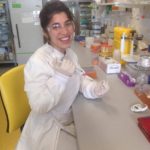
Macarena Pavez
Kerryn Brent – Faculty of Law
The Role of the No-Harm Rule in Governing Solar Radiation Management Geoengineering
Proposals to geoengineer the Earth’s atmosphere to offset the effects of climate change pose a new challenge for international law. They risk having widespread detrimental impacts on the global environment, but most proposals are not specifically governed by an international agreement. States have a general obligation under the customary international law ‘no-harm’ rule to prevent their activities from causing significant harm to other states and the global commons, including the high seas and the atmosphere. Kerryn’s project considers the potential of the no-harm rule to respond to the risks of proposed geoengineering technologies and recommends how it can be developed to bolster the capacity of international law to govern geoengineering.
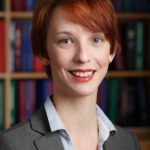
Kerryn Brent
Indi Hodgson-Johnston– Faculty of Law
Who owns Antarctic territory?
The laws of territorial sovereignty and Australia’s claim to the Australian Antarctic Territory.
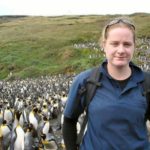
Indi Hodgson-Johnston
Emily Rudling– Asian Studies, School of Humanities
Knowing Tasmania and learning Asia
The Asian economic boom is an opportunity for Tasmania to turnaround persistent socio-economic problems. In 2013 the Giddings State Government releases the Tasmania’s Place in the Asian Century white paper as a roadmap for engaging Asia. A key aspect is committing to Asia related language and cultural education through the policy of Asia literacy. What does this mean for Tasmania? Is Tasmania capable of becoming Asia literate and will this help the state?

Emily Rudling
Genetic Analysis of Australia’s Extinct Fauna, Dr Kieren Mitchell, 25th September, 2016
In the Meeting Room, QVMAG at Inveresk, 1.30 pm Sunday 25th September 2016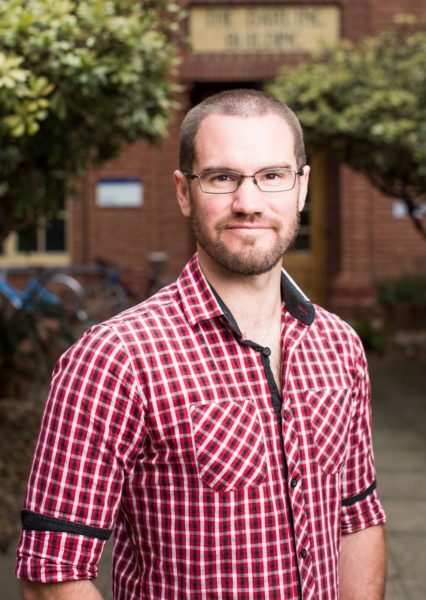
Following its death, the DNA of an animal can be preserved in its bones and teeth for thousands of years. Sequencing this “ancient DNA” allows us to gain insights into the identity and evolution of now-extinct species. In this presentation Kieren will discuss the history of the ancient DNA field, factors affecting the preservation of DNA, and work he is currently involved in focused on extinct Australian species such as the thylacine and giant short-faced kangaroos.
Dr Kieren Mitchell grew up in Tasmania before moving to Adelaide for university, where he studied genetics and evolutionary biology. Having completed his PhD, he now works at the Australian Centre for Ancient DNA at the University of Adelaide. He currently collaborates with researchers from around the world to study extinct species from North America, South America, Europe, Asia, New Zealand, Madagascar, and Australia.
Admission: $6 General Public, $4 Friends of the Museum and Students
Free for members of The Royal Society of Tasmania
As these events are popular, RSVP is essential Thursday 22nd
Extinction Matters: Could Citizen Science Help?
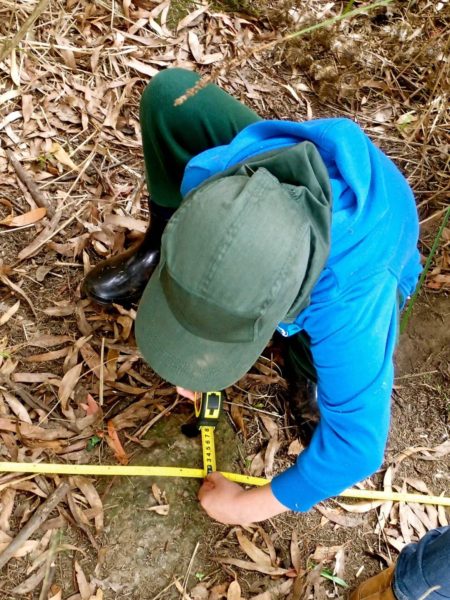 Tuesday September 6, 8 pm Royal Society Lecture presenting Dr Clare Hawkins, Honorary Research Associate at the University of Tasmania in Royal Society Room, TMAG
Tuesday September 6, 8 pm Royal Society Lecture presenting Dr Clare Hawkins, Honorary Research Associate at the University of Tasmania in Royal Society Room, TMAG
In recent times, 27 Tasmanian species are listed as having gone extinct. Threatened Species Day – 7th September 2016 – marks the 80th year since the last known thylacine died. It’s a time to reflect on why extinction matters to us, and how we might reduce our negative impacts on species survival. My own response, as a threatened species zoologist, is to take up a Churchill Fellowship on citizen science, to engage the wider community in better understanding the needs of the plants and animals in their own backyards. In this talk, I share my findings on how this might work most effectively.
Clare Hawkins carried out her PhD on the fossa (Cryptoprocta ferox), a semi-arboreal mammalian carnivore endemic to the forests of Madagascar. Its ecological similarities to the spotted-tailed quoll (Dasyurus maculatus) brought her to Tasmania in 2001 to study the latter species’ habitat requirements. She subsequently joined the State Government, initially with the Save the Tasmanian Devil Program, and spent four years monitoring the impact and distribution of Devil Facial Tumour Disease. She is now Senior Zoologist for the Threatened Species section. She is also the IUCN Australasian Marsupial and Monotreme Specialist Group Red List coordinator and author of the Naturetrackers blog. For the Bookend Trust, she is currently co-organising two ‘Extinction Matters’ BioBlitzes, to be held on either side of Threatened Species Day (7th September 2016). Her current focus is on novel approaches to better monitor and manage Tasmania’s diverse threatened fauna (from quolls and eagles to skinks, butterflies and burrowing crayfish). In 2015, she was awarded a Gallaugher Bequest Churchill Fellowship to develop citizen science study designs for long term monitoring.
Autonomous Underwater Vehicles in Under-Ice Exploration and Research, Mr Peter King, 28 August, 2016
August 28, 1.30 pm in the Meeting Room, QVMAG, Inveresk
Mr Peter King
Autonomous Underwater Vehicles (AUVs) are free swimming robots, which can travel to great depths and far reaching locations. Beginning in the 70s, researchers have tried to exploit their capabilities for working in one of the most remote environments of the earth, under-ice. With continued development and new technologies AUVs continue increase their vital role in under-ice exploration and polar science. In 2015 the Australian Maritime College, under the Antarctic Gateway Partnership project, committed to the purchase and development of an advanced, polar capable AUV. This talk will outline some history of AUV operations in under-ice exploration, their current role in Antarctica and the engineering challenges they face.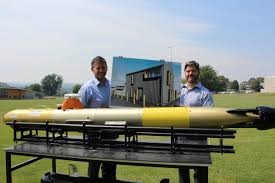
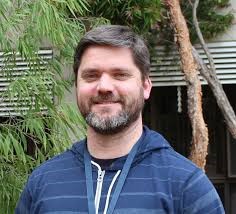
Mr Peter King is the coordinator of the Australian Maritime College’s AUV Facility. Since obtaining his engineering degree from Memorial University of Newfoundland, he has spent over a decade working in ocean technology, research, and autonomous underwater vehicles. At Memorial, he was the lead operator and engineer for a large survey AUV, conducting habitat survey, hydrodynamic studies, and development of vehicle autonomy and advanced navigation. Under the Antarctic Gateway Partnership project, Peter has come to Tasmania to help bring online, a new polar capable AUV for polar research in Antarctica.
Admission: $6 General Public, $4 Friends of the Museum, LHS Members, and Students
Free for members of The Royal Society of Tasmania
To assist us with the organization of this event
RSVP by Thursday 25th August 2016:
Email bookings@qvmag.tas.gov.au or telephone 6323 3798
“Living in an uncertain world: data and decisions”: The psychology of Climate Science Denial
July 27, 7.30 pm Stanley Burbury Theatre, Sandy Bay campus, UTAS
Chair: Her Excellency Professor the Honourable Kate Warner, AM, Governor of Tasmania
Speaker: Dr John Cook, UQ
Around 7% of Australians believe climate change isn’t happening. What drives this rejection of climate science? The biggest driver of climate science denial isn’t education, science literacy, age or income: it’s who you vote for. Political ideology is a key factor, with people who oppose regulation of the fossil fuel industry denying there’s a problem needing solving in the first place. This matters because misinformation generated by this small group confuses the public, decreasing public support for climate action. How do we respond to climate science denial? Presenting evidence about climate change to those who reject climate science is not only ineffective, it can even backfire and harden their views. Instead, psychological research into inoculation theory points to another approach. Just as a vaccination stops a virus from spreading by exposing people to a weak form of the virus, we build resistance to science denial by explaining the techniques and fallacies of misinformation. Rather than try to change the minds of a small minority immune to evidence, we communicate to the majority who are still open to evidence. And not only do we need to communicate the science, we also need to explain how that science can get distorted.
John Cook is the Climate Communication Fellow for the Global Change Institute at The University of Queensland. He created and runs the website SkepticalScience.com, which won the 2011 Australian Museum Eureka Prize for the Advancement of Climate Change Knowledge and the 2016 National Center for Science Education Friend of the Planet Award. John has co-authored several university textbooks on climate change as well as the book Climate Change Denial: Heads in the Sand. In 2013, he published a paper on the scientific consensus on climate change that has been highlighted by President Obama and UK Prime Minister David Cameron. He also developed the MOOC (Massive Online Open Course), Making Sense of Climate Science Denial, released in April 2015. He is currently completing a PhD in cognitive psychology, researching the psychology of climate science denial.
“Living in an uncertain world: data and decisions”: Smart Grids, Messy Society
July 27, 7.30 pm Stanley Burbury Theatre, Sandy Bay campus, UTAS
Chair: Her Excellency Professor the Honourable Kate Warner, AM, Governor of Tasmania
Associate Professor Heather Lovell, UTAS
How we produce and consume electricity is changing: more of us have rooftop solar, there is greater opportunity to purchase household battery storage, and detailed energy data is more widely available. A growing concern of utilities and governments is that large numbers of people will opt to leave the electricity grid (i.e. centralised electricity provision), as it becomes increasingly technically feasible and cost-effective to do so. In this short talk Associate Professor Lovell will explore the nature of the changes already underway in the Australian electricity sector, and consider what past experience tells us about ‘megashifts’. She will also explore how change in an uncertain world can be effectively governed.
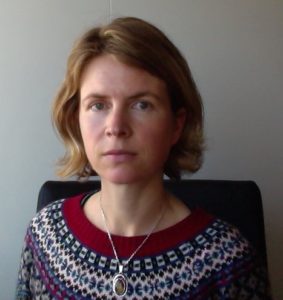 Associate Professor Heather Lovell is an Australian Research Council (ARC) Future Fellow in the School of Social Sciences at the University of Tasmania. Her ARC research is about the learning that is taking place from smart grid experiments. Over the last ten years, her research at Cambridge, Edinburgh and Oxford universities in the UK has focused on how and why technology and policy change occurs, investigating topics ranging from low energy housing to carbon markets.
Associate Professor Heather Lovell is an Australian Research Council (ARC) Future Fellow in the School of Social Sciences at the University of Tasmania. Her ARC research is about the learning that is taking place from smart grid experiments. Over the last ten years, her research at Cambridge, Edinburgh and Oxford universities in the UK has focused on how and why technology and policy change occurs, investigating topics ranging from low energy housing to carbon markets.

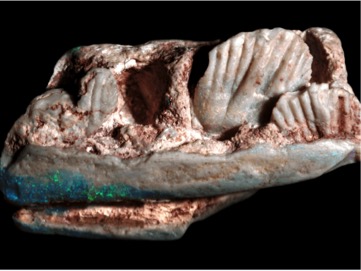
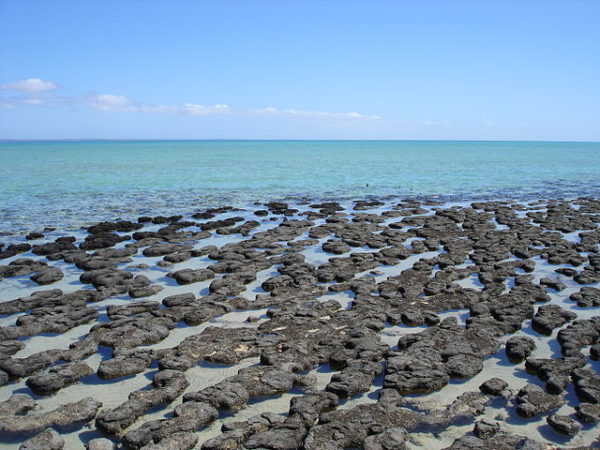
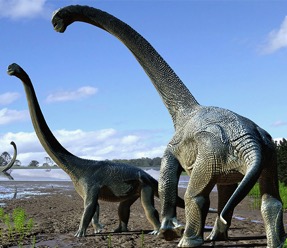
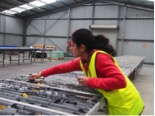

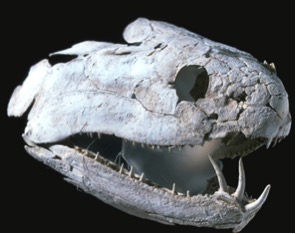
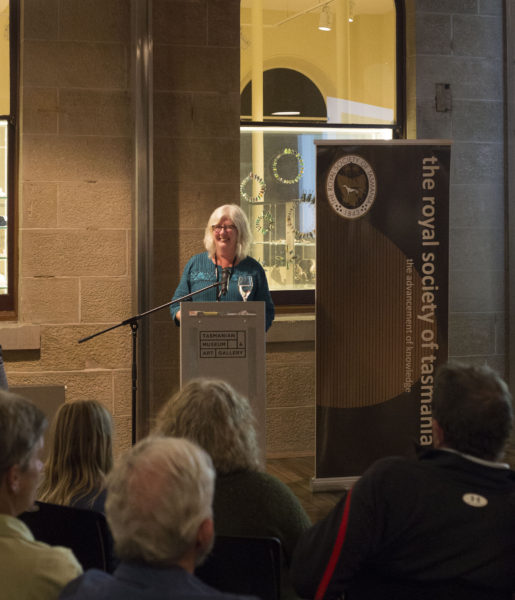 https://soundcloud.com/936-abc-hobart/tassie-tiger-specimens-how-many-are-there-in-the-world
https://soundcloud.com/936-abc-hobart/tassie-tiger-specimens-how-many-are-there-in-the-world